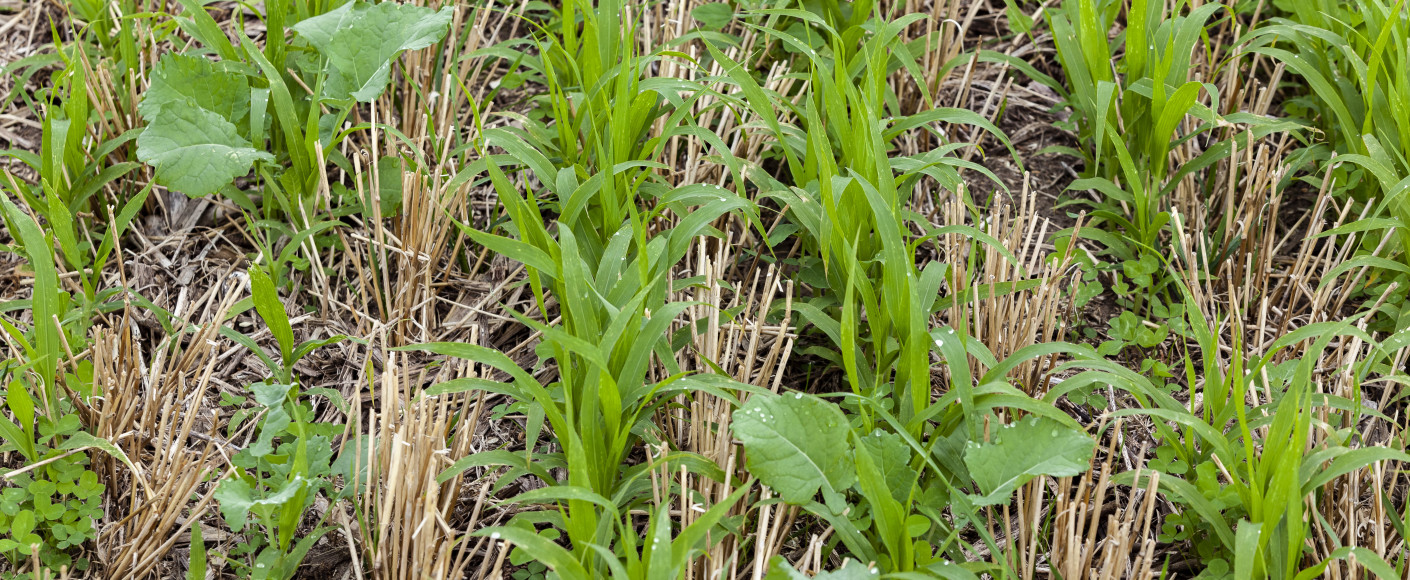The Many Benefits of Multipurpose Cover Crops
“The soil is the great connector of lives, the source and destination of all. It is the healer and restorer and resurrector, by which disease passes into health, age into youth, death into life. Without proper care for it we can have no community, because without proper care for it we can have no life.”
~Wendell Berry
Ask any farmer, and you’ll find that good land stewardship tops their list of priorities. Simply put, with healthy soil comes abundant crops and a successful, thriving farm that can be passed from one generation to the next. To keep their soil productive year after year, many farmers enlist the help of a cover crop.
Safeguarding the Soil
While corn, wheat and other “cash crops” are grown to feed people and animals, cover crops are grown to feed the fields.
According to the Midwest Cover Crops Council, “Cover crops are plants seeded into agricultural fields, either within or outside of the regular growing season, with the primary purpose of improving or maintaining ecosystem quality.” It’s a give-and-take scenario: The cash crop draws nutrients from the soil, and the cover crop steps in to replace them.
Alfalfa, mustard, red clover, rye grasses, buckwheat and more belong to this class of crops, well-known by farmers for their ability to boost soil health naturally in a surprising number of ways.
In addition to preventing nutrient deficiencies, cover crops:
- Reduce erosion
- Improve water quality
- Improve air and water movement through soil
- Suppress weeds and reduce the need for herbicides
- Lower pest control costs
Cover crops can also do double duty as livestock feed, and help support wildlife such as pollinators, deer, pheasants, quail and turkeys.
Putting Plants to Work
Cover crops are planted in spring, summer or fall. While spring plantings are most often killed with herbicides to make way for summer cash crops, most summer and fall crops “self terminate” naturally with the first killing frost of fall. The dead cover crop residue remains on the fields through winter, and when spring arrives, they’re either left on the land’s surface or tilled into the soil.
On the surface, the cover crop works as a mulch, robbing weeds of sunlight and helping the soil retain water by hindering evaporation. Tilled into the land, the plants earn their nickname of “green manure” by decomposing and adding organic matter to the soil, priming it for plantings. Soil rich in organic matter is better able to store water and withstand compaction.
Cover Crop FAQs
Q. How do cover crops reduce erosion?
A. The plants slow runoff — the flow of rainfall and snowmelt — over the field, reducing the amount of soil that washes away. They also lessen rain’s impact on the soil. All those raindrops can break soil down in ways that make it more vulnerable to wind and water erosion.
Q. How do cover crops keep waterways healthy?
A. With less topsoil flowing into nearby rivers and streams, more fertilizers, pesticides and herbicides stay on the fields where they belong.
Q. How do cover crops save money?
A. Some cover crops add nitrogen to the soil naturally, meaning farmers don’t have to purchase as much fertilizer. Plus, damage from erosion can reduce land productivity and increase a farmer’s pest control and irrigation costs. In other words, erosion is expensive!
Q. How do cover crops fight greenhouse gas emissions?
A. Thanks to its ability to store carbon dioxide, soil is becoming an important part of our efforts to reduce greenhouse gas levels in the atmosphere. According to the Sustainable Agriculture Research and Education program (SARE), “The roots and shoots of cover crops feed bacteria, fungi, earthworms and other soil organisms, which increases soil carbon levels over time.” Every little bit helps!
Cover Crops are Catching On
The benefits of cover crops are no longer a secret. As a recent SARE survey stated, “The average acreage planted to cover crops by participants in the 2019 survey has steadily increased over the past five growing seasons, from an average of 337 acres in 2015 to the 2019 average of 465 acres, an increase of nearly 40%.” With all the benefits cover crops provide, it’s no surprise!


